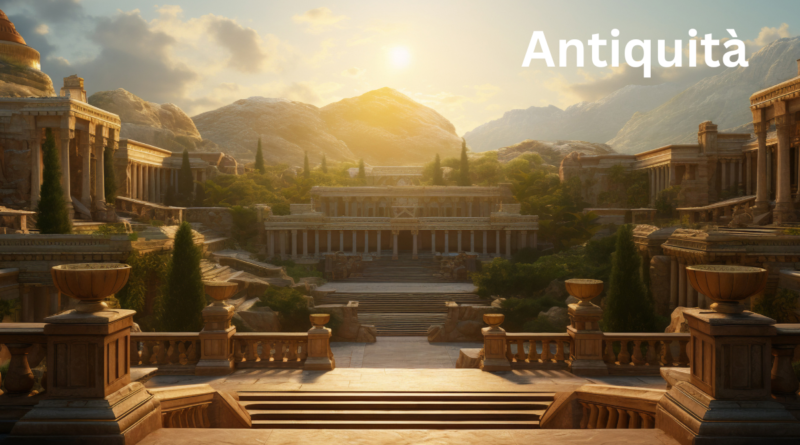Introduction
The term “Antiquità” evokes a sense of reverence for the ancient past, encapsulating the art, architecture, literature, and cultural practices of early civilizations. Rooted in the Latin word for “antiquity,” this concept transcends mere historical interest, touching upon the profound influence of ancient cultures on contemporary society. From the grandeur of the Roman Empire to the philosophical musings of Ancient Greece, and the enduring legacies of the Egyptians and Mesopotamians, Antiquità remains a testament to humanity’s enduring quest for knowledge, beauty, and meaning.
The Art of Antiquità
Ancient art offers a window into the soul of past civilizations, reflecting their values, beliefs, and daily life. Greek sculpture, with its emphasis on idealized human forms, set the standard for beauty and proportion. The Parthenon Marbles, depicting dynamic scenes of gods and heroes, exemplify this artistic pinnacle. Similarly, Roman art, though heavily influenced by the Greeks, added a level of realism and practicality, visible in their busts and public monuments. The Colosseum, with its intricate design and engineering, remains a marvel of ancient Roman innovation.
Egyptian art, characterized by its symbolic and stylized approach, focused on the afterlife and divine order. The grandeur of the pyramids, the serenity of the Sphinx, and the intricate tomb paintings of the Valley of the Kings reveal a civilization deeply concerned with immortality and cosmic harmony. In Mesopotamia, the Ziggurat of Ur and the Code of Hammurabi stand as testaments to the region’s architectural ingenuity and legal advancements.
Architectural Marvels
The architectural achievements of antiquity continue to inspire awe and admiration. The pyramids of Giza, built over 4,000 years ago, are a testament to the Egyptians’ engineering prowess and spiritual aspirations. Their precise alignment with celestial bodies showcases an advanced understanding of astronomy and mathematics.
In Greece, the Acropolis of Athens represents the zenith of classical architecture. The Parthenon, dedicated to Athena, embodies the principles of symmetry, harmony, and proportion that define Greek aesthetics. Meanwhile, the Roman Pantheon, with its immense dome and oculus, demonstrates the Romans’ mastery of concrete and their innovative approach to public spaces.
Mesopotamian ziggurats, such as the Etemenanki in Babylon, illustrate the religious and political centrality of these towering structures. Their stepped design and imposing height served as a bridge between the earthly and the divine, reinforcing the authority of the priestly and ruling classes.
Literary and Philosophical Legacy
The literary and philosophical contributions of antiquity continue to shape modern thought and culture. Homer’s epics, the “Iliad” and the “Odyssey,” are foundational texts of Western literature, exploring themes of heroism, fate, and the human condition. Greek tragedians like Sophocles and Euripides delved into the complexities of human nature and morality, while philosophers such as Socrates, Plato, and Aristotle laid the groundwork for Western philosophy and science.
In Rome, writers like Virgil, Ovid, and Cicero expanded upon Greek literary traditions, infusing them with Roman ideals of duty, honor, and governance. The “Aeneid” by Virgil, for instance, not only narrates the legendary founding of Rome but also serves as a political allegory for Augustus’ reign.
The literary heritage of the Near East is equally rich. The “Epic of Gilgamesh,” one of the earliest known literary works, explores themes of friendship, mortality, and the quest for meaning. Legal codes, religious texts, and epic narratives from ancient Egypt and Mesopotamia provide invaluable insights into the social, religious, and political fabric of these civilizations.
Cultural Practices and Daily Life
Exploring the daily life and cultural practices of ancient civilizations reveals the diversity and complexity of human societies. In Egypt, the interplay between the Nile’s cycles and agricultural activities dictated the rhythms of daily life. Religious rituals, festivals, and monumental building projects were integral to maintaining cosmic order and ensuring the favor of the gods.
Greek society, with its city-states and democratic principles, fostered a culture of public debate, artistic expression, and athletic competition. The Olympic Games, originating in Olympia, symbolized the Greeks’ celebration of physical excellence and unity among the city-states.
Roman culture, known for its pragmatism and organizational prowess, manifested in a robust legal system, engineering feats like aqueducts and roads, and a complex social hierarchy. Public baths, forums, and theaters were central to Roman urban life, providing spaces for socialization, commerce, and entertainment.
Conclusion
Antiquità, in its multifaceted splendor, offers a profound connection to our shared human heritage. The art, architecture, literature, and cultural practices of ancient civilizations continue to resonate with us, inspiring awe and reflection. By studying and preserving these ancient treasures, we honor the ingenuity, creativity, and wisdom of our ancestors, ensuring that the timeless allure of Antiquità endures for generations to come.
4o
